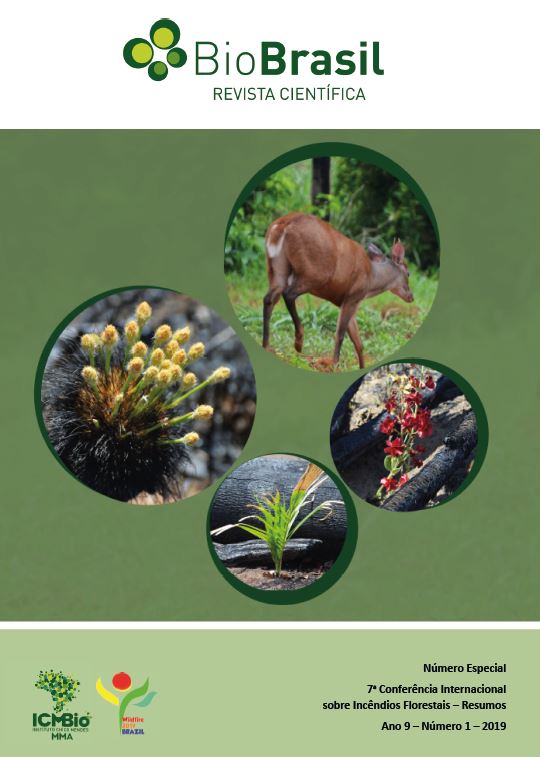Prescribed fire in Mediterranean pinus pinaster management
fire severity effects on fuel dynamics and fuel treatment effectiveness
DOI:
https://doi.org/10.37002/biodiversidadebrasileira.v9i1.1023Keywords:
Fire policy, integrated fire management, prescribed fireAbstract
Prescribed fire treatments strategically allocated in time and space play a key role in forest management to reduce extend and severity of forest fires. The aim of this study was to assess the effects of prescribed fires on Pinus pinaster ecosystems based on the dynamics of surface and canopy layers. In a short-term planning, meteorological conditions and ignition techniques were tested to identify the most effective "burn window". In a medium-term planning, biomass growth and canopy closure were sampled to achieve effective treatment duration. Prescribed fires reduced understory, mainly fine dead and live fuel, and increased the distance between the understory and the canopy base height. Maintaining the level of humus consumption to less than 70% was tried in all experimental burns in order to reduce the soil erosion potential. The best results were achieved in prescribed fires with litter fuel moisture ranging between 9% to 15% and wind velocity between 5 km/h and 12 km/h. Flame residence time according to fuel availability and ignition technique was an essential parameter to estimate fuel dynamics. In our study area, flame residence time higher than 300 s had negative effects on the ecosystem dynamics, showing some dead trees and a low treatment duration or effectiveness. An efficient prescribed fire prescription could minimize the total costs almost 40% in a medium-term planning (12 years). Furthermore, prescribed fire treatments provide other advantages such as firefighter training during the burns and lower costs than mechanized fuel treatments.
Downloads
Downloads
Published
Issue
Section
License
Copyright (c) 2021 Biodiversidade Brasileira - BioBrasil

This work is licensed under a Creative Commons Attribution-NonCommercial-NoDerivatives 4.0 International License.
Os artigos estão licenciados sob uma licença Creative Commons Atribuição-NãoComercial-SemDerivações 4.0 Internacional (CC BY-NC-ND 4.0). O acesso é livre e gratuito para download e leitura, ou seja, é permitido copiar e redistribuir o material em qualquer mídia ou formato.











